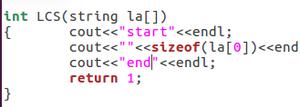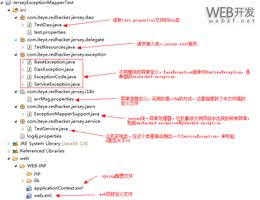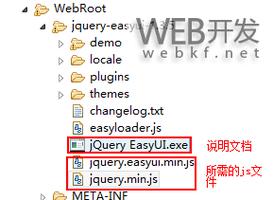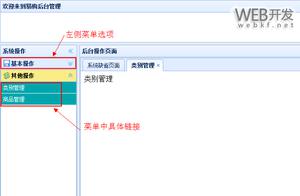如何整合Flask&Scrapy?
我正在使用scrapy来获取数据,并且我想使用flask网络框架在网页中显示结果。但是我不知道如何在烧瓶应用程序中调用蜘蛛。我试图用它CrawlerProcess来称呼我的蜘蛛,但出现了这样的错误:
ValueErrorValueError: signal only works in main thread
Traceback (most recent call last)
File "/Library/Python/2.7/site-packages/flask/app.py", line 1836, in __call__
return self.wsgi_app(environ, start_response)
File "/Library/Python/2.7/site-packages/flask/app.py", line 1820, in wsgi_app
response = self.make_response(self.handle_exception(e))
File "/Library/Python/2.7/site-packages/flask/app.py", line 1403, in handle_exception
reraise(exc_type, exc_value, tb)
File "/Library/Python/2.7/site-packages/flask/app.py", line 1817, in wsgi_app
response = self.full_dispatch_request()
File "/Library/Python/2.7/site-packages/flask/app.py", line 1477, in full_dispatch_request
rv = self.handle_user_exception(e)
File "/Library/Python/2.7/site-packages/flask/app.py", line 1381, in handle_user_exception
reraise(exc_type, exc_value, tb)
File "/Library/Python/2.7/site-packages/flask/app.py", line 1475, in full_dispatch_request
rv = self.dispatch_request()
File "/Library/Python/2.7/site-packages/flask/app.py", line 1461, in dispatch_request
return self.view_functions[rule.endpoint](**req.view_args)
File "/Users/Rabbit/PycharmProjects/Flask_template/FlaskTemplate.py", line 102, in index
process = CrawlerProcess()
File "/Library/Python/2.7/site-packages/scrapy/crawler.py", line 210, in __init__
install_shutdown_handlers(self._signal_shutdown)
File "/Library/Python/2.7/site-packages/scrapy/utils/ossignal.py", line 21, in install_shutdown_handlers
reactor._handleSignals()
File "/Library/Python/2.7/site-packages/twisted/internet/posixbase.py", line 295, in _handleSignals
_SignalReactorMixin._handleSignals(self)
File "/Library/Python/2.7/site-packages/twisted/internet/base.py", line 1154, in _handleSignals
signal.signal(signal.SIGINT, self.sigInt)
ValueError: signal only works in main thread
我这样的草率代码:
class EPGD(Item):genID = Field()
genID_url = Field()
taxID = Field()
taxID_url = Field()
familyID = Field()
familyID_url = Field()
chromosome = Field()
symbol = Field()
description = Field()
class EPGD_spider(Spider):
name = "EPGD"
allowed_domains = ["epgd.biosino.org"]
term = "man"
start_urls = ["http://epgd.biosino.org/EPGD/search/textsearch.jsp?textquery="+term+"&submit=Feeling+Lucky"]
db = DB_Con()
collection = db.getcollection(name, term)
def parse(self, response):
sel = Selector(response)
sites = sel.xpath('//tr[@class="odd"]|//tr[@class="even"]')
url_list = []
base_url = "http://epgd.biosino.org/EPGD"
for site in sites:
item = EPGD()
item['genID'] = map(unicode.strip, site.xpath('td[1]/a/text()').extract())
item['genID_url'] = base_url+map(unicode.strip, site.xpath('td[1]/a/@href').extract())[0][2:]
item['taxID'] = map(unicode.strip, site.xpath('td[2]/a/text()').extract())
item['taxID_url'] = map(unicode.strip, site.xpath('td[2]/a/@href').extract())
item['familyID'] = map(unicode.strip, site.xpath('td[3]/a/text()').extract())
item['familyID_url'] = base_url+map(unicode.strip, site.xpath('td[3]/a/@href').extract())[0][2:]
item['chromosome'] = map(unicode.strip, site.xpath('td[4]/text()').extract())
item['symbol'] = map(unicode.strip, site.xpath('td[5]/text()').extract())
item['description'] = map(unicode.strip, site.xpath('td[6]/text()').extract())
self.collection.update({"genID":item['genID']}, dict(item), upsert=True)
yield item
sel_tmp = Selector(response)
link = sel_tmp.xpath('//span[@id="quickPage"]')
for site in link:
url_list.append(site.xpath('a/@href').extract())
for i in range(len(url_list[0])):
if cmp(url_list[0][i], "#") == 0:
if i+1 < len(url_list[0]):
print url_list[0][i+1]
actual_url = "http://epgd.biosino.org/EPGD/search/" + url_list[0][i+1]
yield Request(actual_url, callback=self.parse)
break
else:
print "The index is out of range!"
我的flask代码如下:
@app.route('/', methods=['GET', 'POST'])def index():
process = CrawlerProcess()
process.crawl(EPGD_spider)
return redirect(url_for('details'))
@app.route('/details', methods = ['GET'])
def epgd():
if request.method == 'GET':
results = db['EPGD_test'].find()
json_results= []
for result in results:
json_results.append(result)
return toJson(json_results)
使用Flask Web框架时,如何称呼我的抓狂蜘蛛?
回答:
在你的Spider前面添加HTTP服务器并不是那么容易。有几种选择。
- Python subprocess
如果你真的只限于Flask,如果你不能使用其他任何东西,则将Scrapy与Flask集成的唯一方法是按照其他答案的建议为每个蜘蛛爬网启动外部进程(请注意,你的子进程需要在适当的Scrapy项目中生成)目录)。
所有示例的目录结构应如下所示,我正在使用dirbot测试项目
> tree -L 1 ├── dirbot
├── README.rst
├── scrapy.cfg
├── server.py
└── setup.py
这是在新过程中启动Scrapy的代码示例:
# server.pyimport subprocess
from flask import Flask
app = Flask(__name__)
@app.route('/')
def hello_world():
"""
Run spider in another process and store items in file. Simply issue command:
> scrapy crawl dmoz -o "output.json"
wait for this command to finish, and read output.json to client.
"""
spider_name = "dmoz"
subprocess.check_output(['scrapy', 'crawl', spider_name, "-o", "output.json"])
with open("output.json") as items_file:
return items_file.read()
if __name__ == '__main__':
app.run(debug=True)
将其另存为server.py并访问localhost:5000,你应该可以看到被抓取的项目。
其他更好的方法是使用一些现有项目,该项目将Twisted与Werkzeug集成在一起,并显示类似于Flask的API,例如Twisted-Klein。Twisted-Klein允许你在与Web服务器相同的过程中异步运行蜘蛛。最好不要在每个请求上都阻塞,它使你可以简单地从HTTP路由请求处理程序返回Scrapy / Twisted延迟。
在代码片段将Twisted-Klein与Scrapy集成之后,请注意,你需要创建自己的CrawlerRunner基类,以便Crawler可以收集项目并将其返回给调用方。此选项稍微高级一些,你正在以与Python服务器相同的方式运行Scrapy Spider,项目不是存储在文件中而是存储在内存中(因此,与前面的示例一样,没有磁盘写/读操作)。最重要的是,它是异步的,并且都在一个Twisted反应器中运行。
# server.pyimport json
from klein import route, run
from scrapy import signals
from scrapy.crawler import CrawlerRunner
from dirbot.spiders.dmoz import DmozSpider
class MyCrawlerRunner(CrawlerRunner):
"""
Crawler object that collects items and returns output after finishing crawl.
"""
def crawl(self, crawler_or_spidercls, *args, **kwargs):
# keep all items scraped
self.items = []
# create crawler (Same as in base CrawlerProcess)
crawler = self.create_crawler(crawler_or_spidercls)
# handle each item scraped
crawler.signals.connect(self.item_scraped, signals.item_scraped)
# create Twisted.Deferred launching crawl
dfd = self._crawl(crawler, *args, **kwargs)
# add callback - when crawl is done cal return_items
dfd.addCallback(self.return_items)
return dfd
def item_scraped(self, item, response, spider):
self.items.append(item)
def return_items(self, result):
return self.items
def return_spider_output(output):
"""
:param output: items scraped by CrawlerRunner
:return: json with list of items
"""
# this just turns items into dictionaries
# you may want to use Scrapy JSON serializer here
return json.dumps([dict(item) for item in output])
@route("/")
def schedule(request):
runner = MyCrawlerRunner()
spider = DmozSpider()
deferred = runner.crawl(spider)
deferred.addCallback(return_spider_output)
return deferred
run("localhost", 8080)
将上面的内容保存在server.py文件中,并将其放在你的Scrapy项目目录中,现在打开localhost:8080,它将启动dmoz spider并将作为json抓取的项目返回到浏览器。
当你尝试在蜘蛛程序前面添加HTTP应用程序时,会出现一些问题。例如,你有时需要处理蜘蛛日志(在某些情况下可能需要它们),需要以某种方式处理蜘蛛异常等。有些项目可让你以更简单的方式向蜘蛛添加HTTP API,例如ScrapyRT。这是一个将HTTP服务器添加到你的Scrapy Spiders并为你处理所有问题(例如,处理日志记录,处理Spider错误等)的应用程序。
因此,在安装ScrapyRT之后,你只需要执行以下操作:
> scrapyrt 以上是 如何整合Flask&Scrapy? 的全部内容, 来源链接: utcz.com/qa/429297.html







